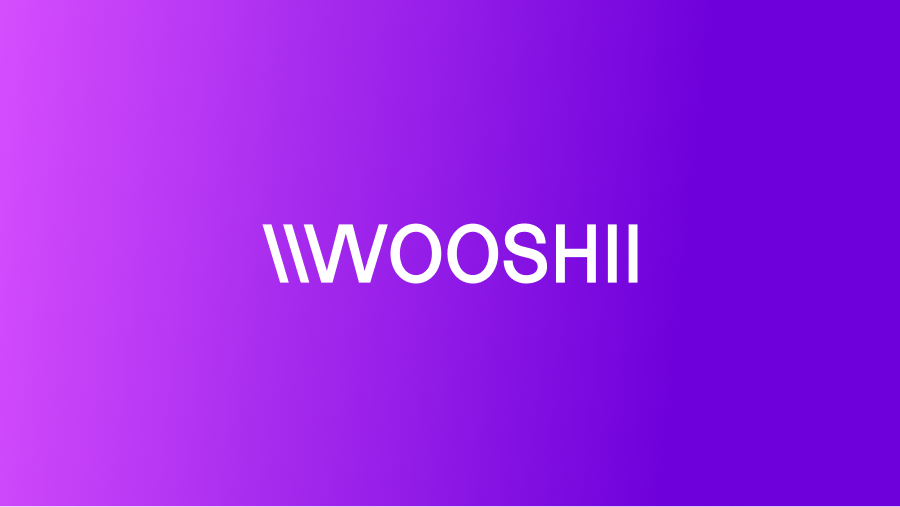Ready to level up your game with the latest AI wizardry? Welcome to the fascinating world of prompt engineering – your new secret weapon in the digital marketing arena.
Prompt engineering is the art and science of crafting clever instructions for AI language models to get them to produce exactly what you need. Think of it as learning to speak “AI” fluently. It’s like having a super-smart intern who can tackle any task, as long as you know how to ask.
Why should you care? Well, in today’s marketing landscape, prompt engineering is becoming as essential as your morning coffee. It’s revolutionizing how we create content, engage customers, and strategize our campaigns. Imagine churning out blog posts, social media updates, and email copy at lightning speed, all while maintaining your brand’s unique voice. That’s the power of mastering prompt engineering.
But it’s not just about speed. It’s about unleashing creativity you never knew you had. With the right prompts, you can explore new ideas, uncover hidden insights, and push the boundaries of your marketing efforts. It’s like having a brainstorming session with the collective knowledge of the internet at your fingertips.
As we dive deeper into this guide, you’ll discover how to harness this game-changing skill to stay ahead of the curve and deliver marketing magic that’ll make your competitors wonder what secret sauce you’re using. So, buckle up and get ready to become the prompt engineering pro your marketing team never knew they needed!
Understanding AI and Large Language Models (LLMs)
Alright, before we jump into the nitty-gritty of prompt engineering, let’s take a moment to understand the tech behind the magic. We’re talking about AI and, more specifically, Large Language Models (LLMs). Don’t worry – I promise to keep this jargon-free and painless!
First things first – AI, or Artificial Intelligence, is like the brain of a computer. It’s designed to mimic human intelligence, learning from vast amounts of data to make decisions or generate content. Now, within the AI family, we have a special branch called Natural Language Processing (NLP). This is where things get interesting for us marketers.
NLP is all about teaching computers to understand, interpret, and generate human language. It’s what allows your smartphone to understand your voice commands or chatbots to engage in conversations. Pretty neat, right?
Now, let’s zoom in on Large Language Models. These are the heavyweight champions of the NLP world. LLMs are trained on massive amounts of text data – we’re talking billions of words from books, articles, websites, and more. They learn patterns, context, and nuances of language, allowing them to generate human-like text, answer questions, and even engage in creative writing.
Some popular LLMs you might have heard of include:
- ChatGPT: The cool kid on the block, known for its conversational abilities and wide-ranging knowledge.
- GPT-3.5: The powerhouse behind many AI writing tools, capable of generating diverse types of content.
- Google’s Bard: The search giant’s entry into the conversational AI arena, bringing Google’s vast knowledge to the table.
So, how do these LLMs work their magic? In simple terms, when you input a prompt, the model looks at the patterns it has learned from its training data. It then predicts the most likely sequence of words that should come next, based on the context of your prompt. It’s like having a super-smart predictive text function, but on steroids!
The key thing to remember is that LLMs don’t actually “understand” language in the way humans do. They’re pattern-matching machines, incredibly good at predicting what text should come next based on what they’ve seen before. This is why the way we phrase our prompts is so crucial – we’re essentially guiding the model to the patterns we want it to use.
Understanding this foundational concept is crucial for effective prompt engineering. It helps you grasp why certain prompts work better than others and how to structure your inputs for optimal results. As we move forward, keep this in mind: you’re not just typing instructions; you’re engaging in a dance with an AI that’s trying to match patterns and predict the best possible output based on your lead.
So, now that we’ve got the basics down, are you ready to start speaking AI? Let’s dive into the principles that’ll make you a prompt engineering pro!
Key Principles of Effective Prompt Engineering
Now that we’ve got the lay of the land, let’s dive into the secret sauce of prompt engineering. These principles are your North Star for crafting prompts that’ll make AI models sit up and take notice. Master these, and you’ll be well on your way to becoming a prompt engineering virtuoso.
- Clarity is King
When it comes to prompt engineering, clarity isn’t just important – it’s everything. Remember, you’re communicating with an AI that doesn’t have the benefit of human intuition or context. Every word counts, so be as clear and specific as possible.
Instead of saying “Write a blog post about marketing,” try “Write a 500-word blog post about content marketing strategies for B2B SaaS companies, focusing on SEO optimization and lead generation.”
The more specific you are, the better the AI can understand and deliver on your expectations. Think of it as giving directions to someone who’s never been to your city before – the more details you provide, the more likely they are to end up exactly where you want them to.
- Context is Queen
While clarity sets the stage, context gives your prompt depth and direction. Providing relevant background information helps the AI understand the bigger picture and generate more accurate and tailored responses.
For example, if you’re creating an email campaign, you might say: “We’re a sustainable fashion brand targeting environmentally conscious millennials. Write an email introducing our new line of recycled denim jeans, emphasizing our eco-friendly production process and the importance of reducing fashion waste.”
By setting the scene, you’re giving the AI the tools it needs to craft content that resonates with your specific audience and aligns with your brand values.
- Be Specific About Format and Tone
AI models are incredibly versatile, but they need guidance on the format and tone you’re looking for. Are you aiming for a formal white paper or a casual blog post? Do you want a professional tone or something more playful?
For instance: “Write a LinkedIn post announcing a new product launch. Use a professional yet approachable tone, include three key features of the product, and end with a call-to-action to visit our website for more information. The post should be approximately 150 words long.”
This level of detail helps ensure that the output not only contains the right information but is also presented in a way that fits your needs and platform.
- Use Examples When Possible
Sometimes, the best way to communicate what you want is to show, not tell. Providing examples can be incredibly helpful, especially when you’re looking for a specific style or format.
Let’s say you’re after a certain type of tweet. You might prompt: “Write 5 tweets promoting our annual marketing conference. Use a mix of questions, statistics, and teasers. Here’s an example of the style we’re going for: ‘Ready to supercharge your marketing strategy? Join 500+ industry leaders at #MarketingMasterclass2024. Early bird tickets available now!'”
This approach gives the AI a clear template to work from, increasing the chances of getting outputs that match your vision.
- Iterate and Refine
Prompt engineering is as much an art as it is a science. Don’t expect to hit the bullseye on your first try every time. Be prepared to iterate and refine your prompts based on the outputs you receive.
If the initial result isn’t quite what you’re looking for, analyze why. Is the tone off? Is it missing key information? Use these insights to adjust your prompt. Maybe you need to be more specific, or perhaps you need to rephrase your request.
For example, if your first prompt for a product description feels too dry, you might refine it like this: “Rewrite the previous product description, but this time, use more engaging and emotionally evocative language. Focus on how the product makes the user feel and the lifestyle it represents.”
- Embrace the Power of Instructions
Don’t be shy about giving the AI specific instructions within your prompt. This can include directions on structure, requests for certain types of information, or even step-by-step guidelines.
For instance: “Create an outline for a blog post about social media marketing. Include an introduction, 3 main sections each with 2-3 subsections, and a conclusion. For each main section, provide a brief description of what should be covered.”
These explicit instructions act like a roadmap for the AI, guiding it to produce more structured and tailored content.
- Keep Ethics in Mind
As you craft your prompts, always keep ethical considerations at the forefront. Avoid asking for content that could be misleading, biased, or harmful. Remember, the AI will generate content based on your instructions, so it’s up to you to ensure those instructions lead to ethical outputs.
For example, instead of asking for “tricks to manipulate customers into buying,” rephrase it as “ethical persuasion techniques to increase sales while providing value to customers.”
By following these principles, you’ll be well on your way to crafting prompts that unlock the full potential of AI for your marketing efforts. Remember, prompt engineering is a skill that improves with practice. The more you experiment and refine your approach, the better your results will become. So, ready to put these principles into action? Let’s move on to exploring the different types of prompts you can use in your marketing arsenal!
Types of Prompts for Marketing
Now that we’ve covered the key principles, let’s explore the different types of prompts you can use in your marketing toolkit. Think of these as different brushes in your artistic palette – each one has its unique strengths and can help you achieve specific goals. Let’s dive in!
- Zero-Shot Learning Prompts
Zero-shot learning is like asking the AI to take a leap of faith. You’re giving it a task without any prior examples or specific training. It’s testing the AI’s ability to understand and perform a task based solely on your description.
Example: “Write a product description for a new smartwatch that tracks sleep patterns and stress levels.”
When to use it: This is great for straightforward tasks or when you want to see how the AI interprets your request without any additional guidance. It’s also useful when you’re looking for fresh, unbiased ideas.
- One-Shot Learning Prompts
One-shot learning involves providing a single example along with your request. It’s like giving the AI a template to work from.
Example: “Write a tweet promoting our new ebook. Here’s an example of our usual style: ‘Unlock the secrets of content marketing in our latest ebook: ’10 Strategies That Tripled Our Traffic’. Download now and watch your engagement soar! #ContentMarketing'”
When to use it: This is perfect when you have a specific style or format in mind and want the AI to replicate it. It’s also useful for maintaining consistency across multiple pieces of content.
- Few-Shot Learning Prompts
Few-shot learning takes it up a notch by providing multiple examples. This gives the AI a broader understanding of what you’re looking for.
Example: “Write 3 email subject lines for our summer sale. Here are some examples of our high-performing subject lines:
- ‘Last chance: 50% off ends at midnight!’
- ‘The secret to summer style (hint: it’s on sale)’
- ‘Open for a surprise summer discount'”
When to use it: Use this when you want to generate multiple options that align with your brand voice or when you’re working on a complex task that benefits from varied examples.
- Chain-of-Thought Prompting
This type of prompting asks the AI to detail its reasoning process, providing insight into how it arrived at a particular output.
Example: “Create a marketing strategy for launching a new organic skincare line. Walk me through your thought process, explaining why you’re recommending each step.”
When to use it: This is invaluable when you want to understand the logic behind the AI’s suggestions or when you’re tackling complex marketing challenges that require a step-by-step approach.
- Iterative Prompting
Iterative prompting involves refining your prompt based on initial outputs. It’s a back-and-forth process where you guide the AI towards your desired result.
Example:
Initial prompt: “Write a blog post introduction about the importance of SEO.”
After receiving the output, you might follow up with: “Great start. Now, rewrite the introduction to include more statistics and a personal anecdote about a business that improved its ranking.”
When to use it: This is perfect for fine-tuning content or when you’re not quite sure what you want until you see some options. It’s also great for complex tasks that require multiple rounds of refinement.
- Role-Playing Prompts
In this approach, you ask the AI to assume a specific role or perspective when generating content.
Example: “As a social media influencer in the fitness niche, write an Instagram caption promoting our new protein shake.”
When to use it: This is excellent for creating authentic-sounding content for different personas or when you need to approach a topic from a specific point of view.
- Comparative Prompts
These prompts ask the AI to compare and contrast different elements, helping you make informed decisions.
Example: “Compare the potential effectiveness of an email marketing campaign versus a social media campaign for promoting our new online course. Consider factors like reach, engagement, and conversion potential.”
When to use it: Use this when you need to weigh different marketing strategies or when you want to understand the pros and cons of various approaches.
- Scenario-Based Prompts
These prompts set up a specific scenario for the AI to work within, providing rich context for more tailored outputs.
Example: “Our eco-friendly water bottle company is facing increased competition. Create a marketing plan to differentiate our brand and increase market share. Consider our unique selling points of biodegradable materials and a one-for-one donation model.”
When to use it: This is ideal for strategic planning or when you need to address specific marketing challenges within the context of your business situation.
By mastering these different types of prompts, you’ll have a versatile toolkit at your disposal. You can mix and match these approaches depending on your specific needs, the complexity of the task, and the type of output you’re looking for.
Remember, the key to success with prompt engineering is experimentation and refinement. Don’t be afraid to try different types of prompts for the same task – you might be surprised at the variety of creative and effective solutions you can generate.
As you become more comfortable with these techniques, you’ll start to develop an intuition for which type of prompt works best in different situations. This expertise will allow you to leverage AI as a powerful ally in your marketing efforts, enhancing your creativity and productivity.
Ready to put these prompt types into action?






